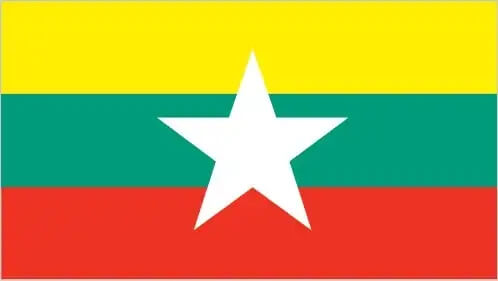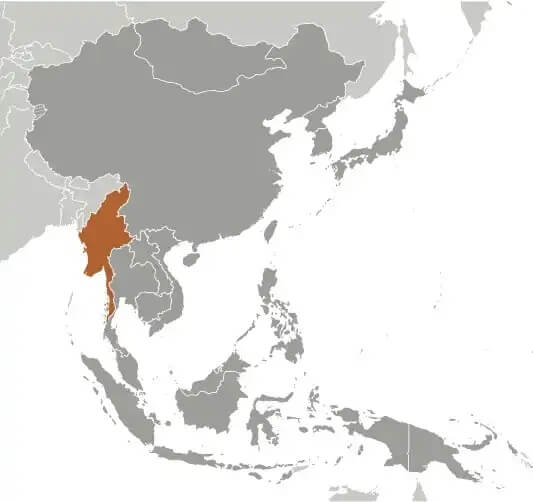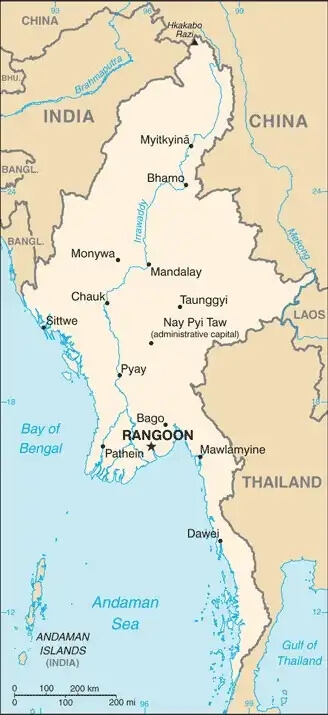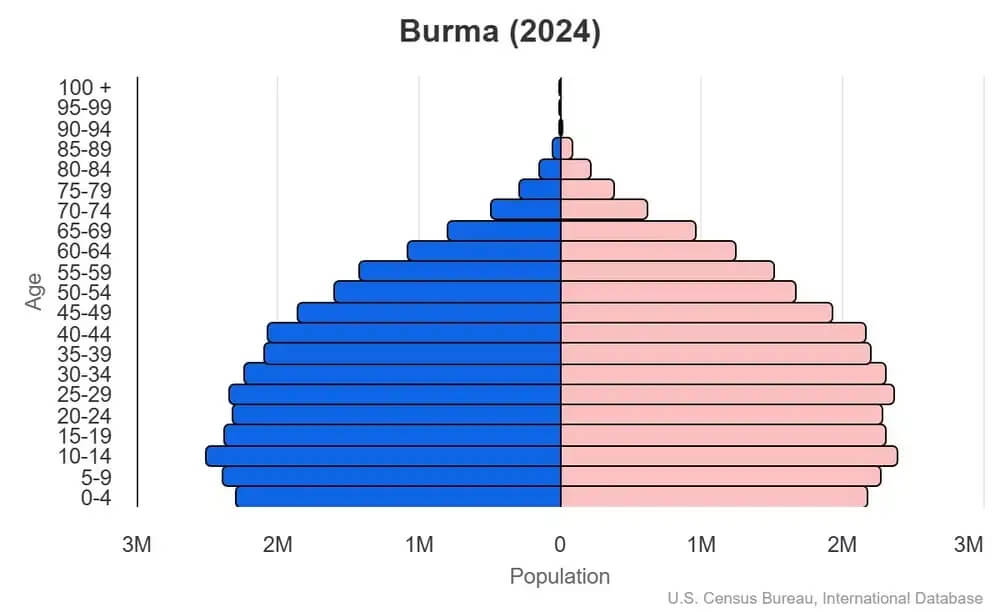World Book
Burma
World Book Index
51


With a score of 51, the country is ranked 123rd out of 158 countries in the World Book ranking. (more information)
Introduction
Background
Burma was a province of British India until 1937 and then a self-governing colony until independence in 1948. The military traditionally has been heavily involved in politics and the economy and ran the country for five decades after a military coup in 1962. A civilian government was elected in 2015, but the military overthrew it in 2021 and largely reversed nascent reforms. The country has been mired in an insurgency against the military regime since 2021.
Geography
Area
total : 676,578 sq km
land: 653,508 sq km
water: 23,070 sq km
Climate
tropical monsoon; cloudy, rainy, hot, humid summers (southwest monsoon, June to September); less cloudy, scant rainfall, mild temperatures, lower humidity during winter (northeast monsoon, December to April)
Natural resources
petroleum, timber, tin, antimony, zinc, copper, tungsten, lead, coal, marble, limestone, precious stones, natural gas, hydropower, arable land
People and Society
Population
total: 57,527,139 (2024 est.)
Ethnic groups
Burman (Bamar) 68%, Shan 9%, Karen 7%, Rakhine 4%, Chinese 3%, Indian 2%, Mon 2%, other 5%
Languages
Burmese (official)
Religions
Buddhist 87.9%, Christian 6.2%, Muslim 4.3%, Animist 0.8%, Hindu 0.5%, other 0.2%, none 0.1% (2014 est.)
Population growth rate
0.71% (2024 est.)
Government
Government type
military regime
Capital
name: Rangoon (aka Yangon, continues to be recognized as the primary Burmese capital by the US Government); Nay Pyi Taw is the administrative capital
Executive branch
chief of state: Acting President Sr. Gen. MIN AUNG HLAING (since 31 July 2025)
head of government: Prime Minister NYO SAW (since 31 July 2025)
Diplomatic representation in the US
chief of mission: Ambassador (vacant); Chargé d'Affaires Soe Thet NAUNG (since 24 June 2025)
Diplomatic representation from the US
chief of mission: Ambassador (vacant); Chargé d’Affaires Susan STEVENSON (since 10 July 2023)
Economy
Economic overview
prior to COVID-19 and the February 2021 military coup, massive declines in poverty, rapid economic growth, and improving social welfare; underdevelopment, climate change, and unequal investment threaten progress and sustainability planning; since coup, foreign assistance has ceased from most funding sources
Real GDP (purchasing power parity)
$287.559 billion (2024 est.)
$290.381 billion (2023 est.)
$287.624 billion (2022 est.)
Real GDP per capita
$5,300 (2024 est.)
$5,400 (2023 est.)
$5,400 (2022 est.)
Exports
$20.4 billion (2021 est.)
$17.523 billion (2019 est.)
$15.728 billion (2018 est.)
Exports - partners
China 32%, Thailand 16%, Japan 7%, Germany 6%, India 5% (2023)
Exports - commodities
garments, natural gas, dried legumes, rare-earth metal compounds, precious stones (2023)
Imports
$23.1 billion (2021 est.)
$17.356 billion (2019 est.)
$18.664 billion (2018 est.)
Imports - partners
China 40%, Thailand 18%, Singapore 15%, Indonesia 4%, Malaysia 4% (2023)
Imports - commodities
refined petroleum, synthetic fabric, fertilizers, crude petroleum, fabric (2023)
Human Development Index
The country's Human Development Index (HDI) is 0.609, ranking it 150th out of 193 countries tested. (more information)
World Happiness Report
The World Happiness Report ranked the country 131st out of 158 countries tested with a score of 4.228. (more information)



